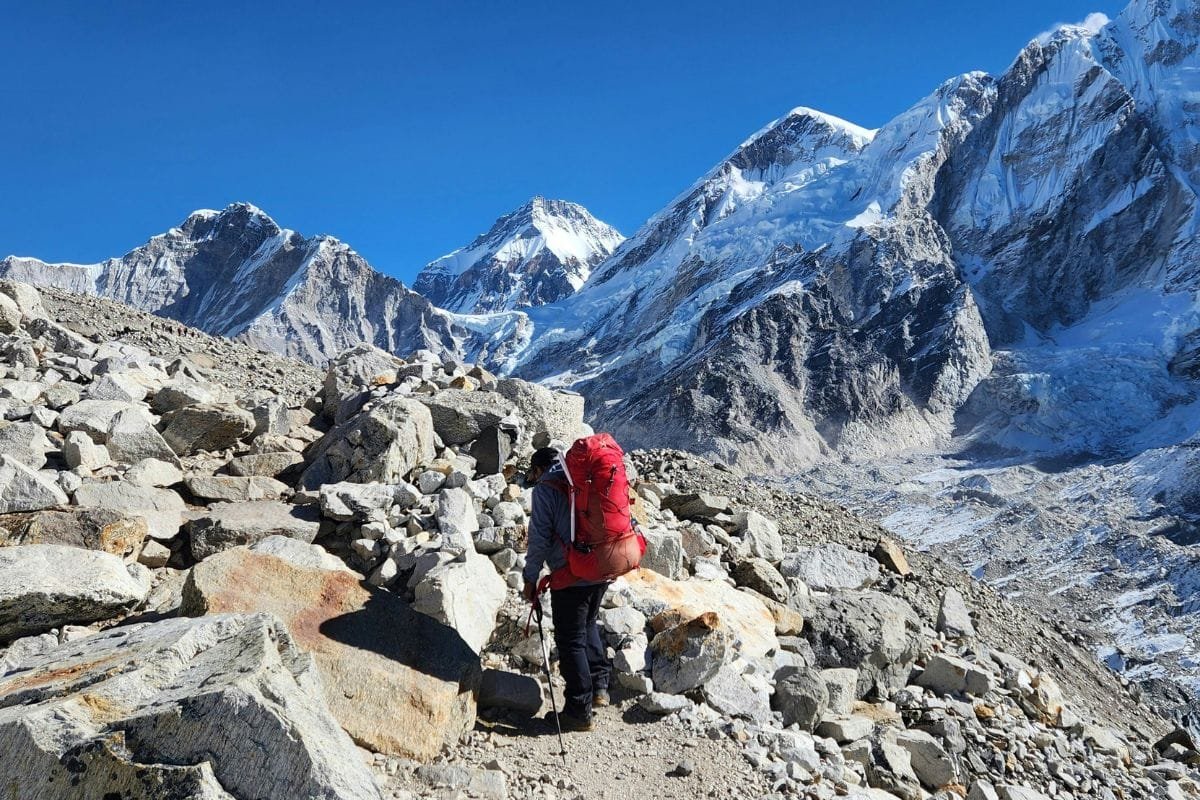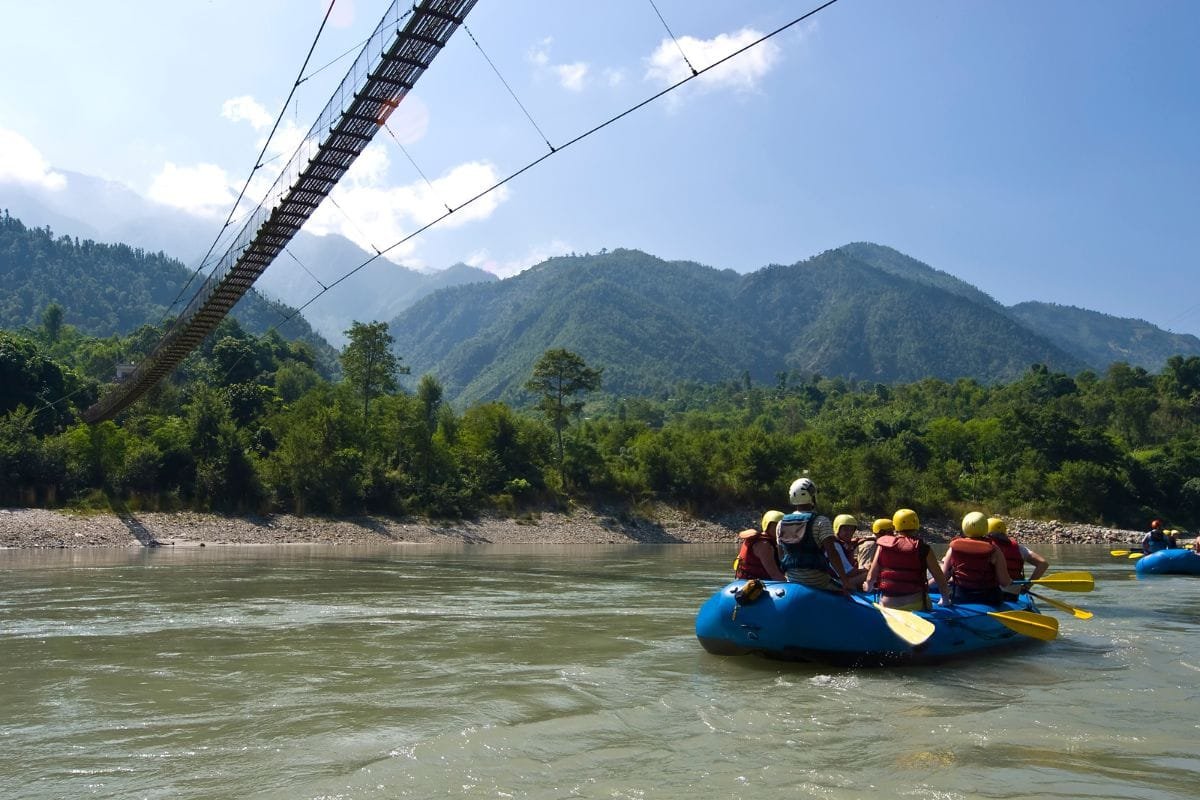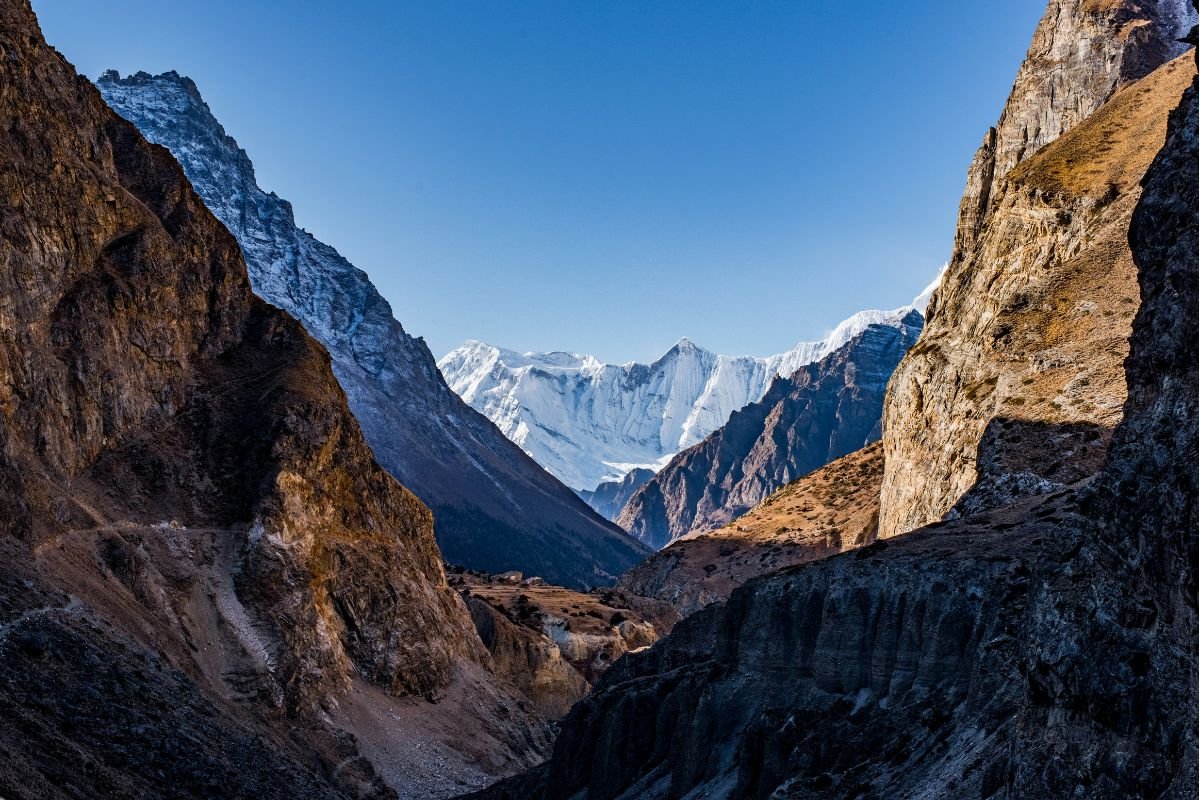Located in the beautiful Mustang region of Nepal, Muktinath Temple is one of the most important religious sites for both Hindus and Buddhists. For Hindus, it is a place to seek moksha (freedom from the cycle of life and death), while Buddhists see it as a sacred place blessed by Guru Rinpoche, the great teacher who helped spread Buddhism in Tibet. At an altitude of 3,710 meters, Muktinath is surrounded by stunning mountain views and peaceful landscapes, making it a perfect place for prayer, reflection, and finding inner peace.
Muktinath is special not only because of its religious importance but also because it shows the strong spirit of religious harmony in Nepal. Both Hindu priests and Buddhist monks are respected here, and pilgrims from different faiths come together in devotion. The temple’s sacred flame, natural waterspouts of liberation, and simple stone structure create a powerful atmosphere that touches the heart of every visitor. A journey to Muktinath Temple is not just a pilgrimage — it is a chance to experience Nepal’s rich culture, spirituality, and the true meaning of peaceful coexistence.
The Spiritual Significance of Muktinath
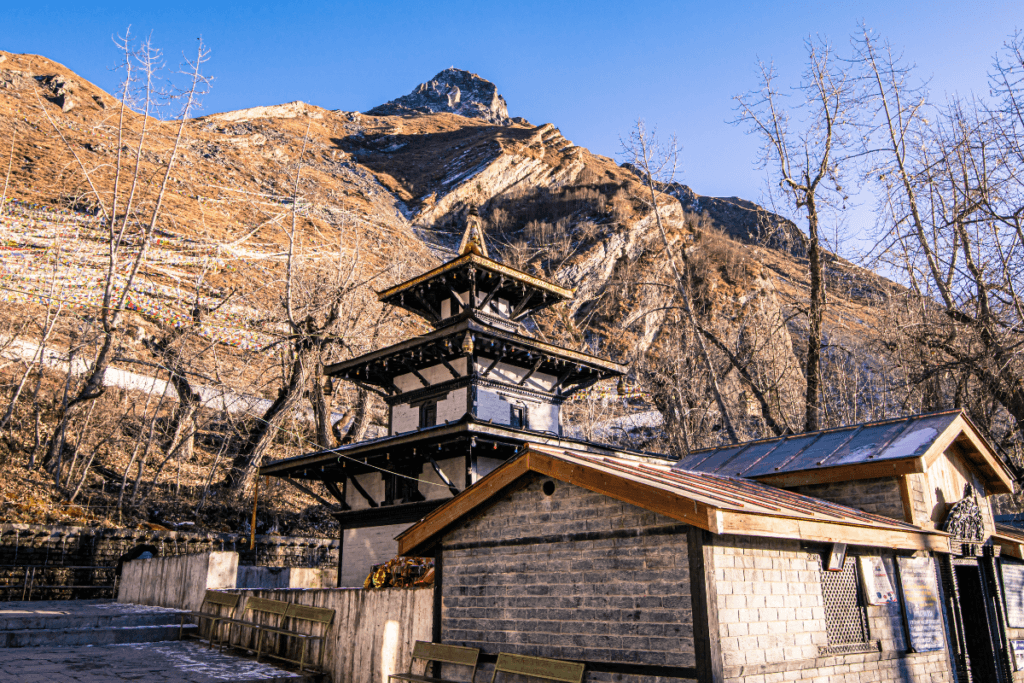
For Hindus, Muktinath Temple is one of the most sacred pilgrimage destinations. It is considered a place of moksha—liberation from the cycle of birth and rebirth. As one of the 108 Divya Desams, it holds immense importance in the Vaishnava tradition, dedicated to Lord Vishnu. Devotees believe that visiting Muktinath and bathing under its 108 sacred water spouts cleanses one’s sins and grants salvation.
In Buddhist belief, Muktinath is known as Chumig Gyatsa, meaning ‘Hundred Waters.’ It is revered as a place blessed by Guru Rinpoche (Padmasambhava), who played a vital role in spreading Buddhism across Tibet and Nepal. Tibetan Buddhists see Muktinath as a site of spiritual purification and enlightenment, connecting it deeply to their sacred traditions.
Religious Harmony in Nepal
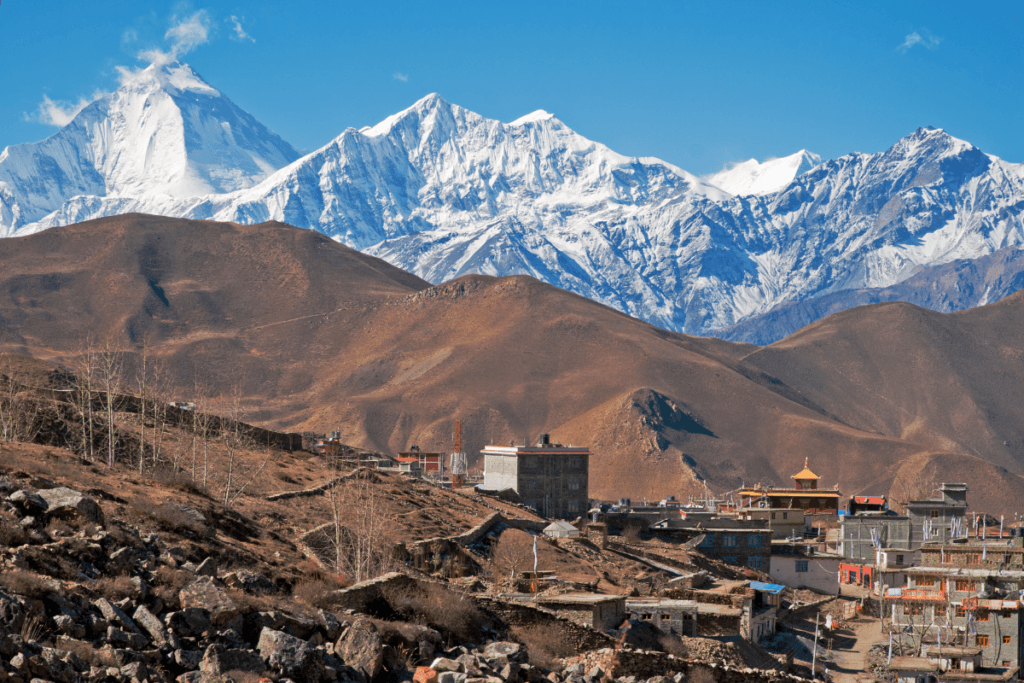
Muktinath Temple is a living example of religious harmony in Nepal, where Hindu priests conduct the rituals, but Buddhist monks are equally respected. The temple complex itself reflects a fusion of both religions, where visitors can witness Buddhist prayer flags fluttering alongside Hindu shrines. It is not merely a religious destination but a cultural crossroads where faiths meet, not in conflict, but in peaceful coexistence.
Such harmony is a beautiful reflection of Nepal’s broader social fabric, where shared sacred spaces are a common phenomenon, and different communities honor each other’s traditions.
Architectural and Natural Beauty

Beyond its spiritual appeal, Muktinath Temple is a marvel of architecture set against the dramatic backdrop of the Annapurna and Dhaulagiri ranges. The stone-built temple, surrounded by the eternal flame (Jwala Mai Temple) and the flowing water spouts, creates a serene environment for reflection and devotion. Pilgrims often feel a profound sense of peace and connection to the divine amidst the stark beauty of Mustang’s rugged landscape.
Journey to the Sacred Site
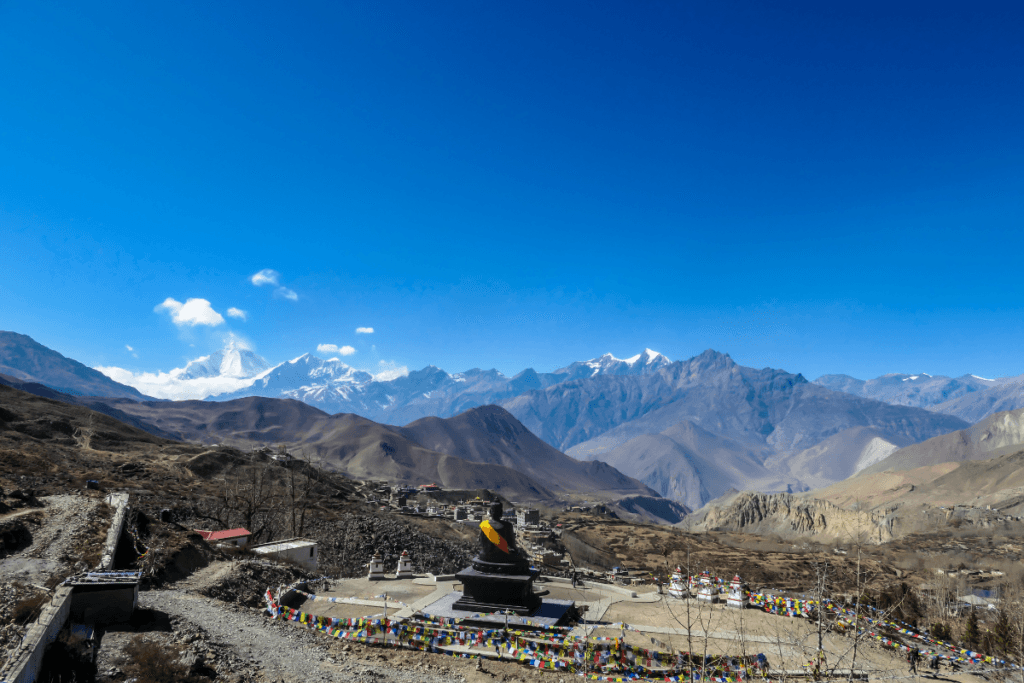
Reaching Muktinath Temple is not just a journey of distance, but it is a journey of faith, adventure, and personal discovery. Travelers can choose different ways to reach this sacred site, depending on their time, preference, and comfort. Some prefer to trek along the famous Annapurna Circuit, experiencing the raw beauty of the Himalayas step by step, while others opt for a more convenient route by flying to Jomsom and driving to Muktinath by jeep. Helicopter tours are also available for those who wish to enjoy a breathtaking aerial view of the stunning Mustang landscape.
With the help of trusted travel partners like FROX Holidays Nepal, organizing a visit to Muktinath becomes smooth and worry-free. Whether you are looking for a carefully planned pilgrimage tour, an adventurous trek, or a customized travel package that combines comfort with spirituality, professional guidance makes the journey even more meaningful. From arranging flights, permits, and accommodations to guiding you through the sacred rituals at the temple, FROX Holidays ensures that your visit to Muktinath is a truly memorable and spiritually uplifting experience.
Muktinath for Hindus and Buddhists – A Shared Spiritual Home
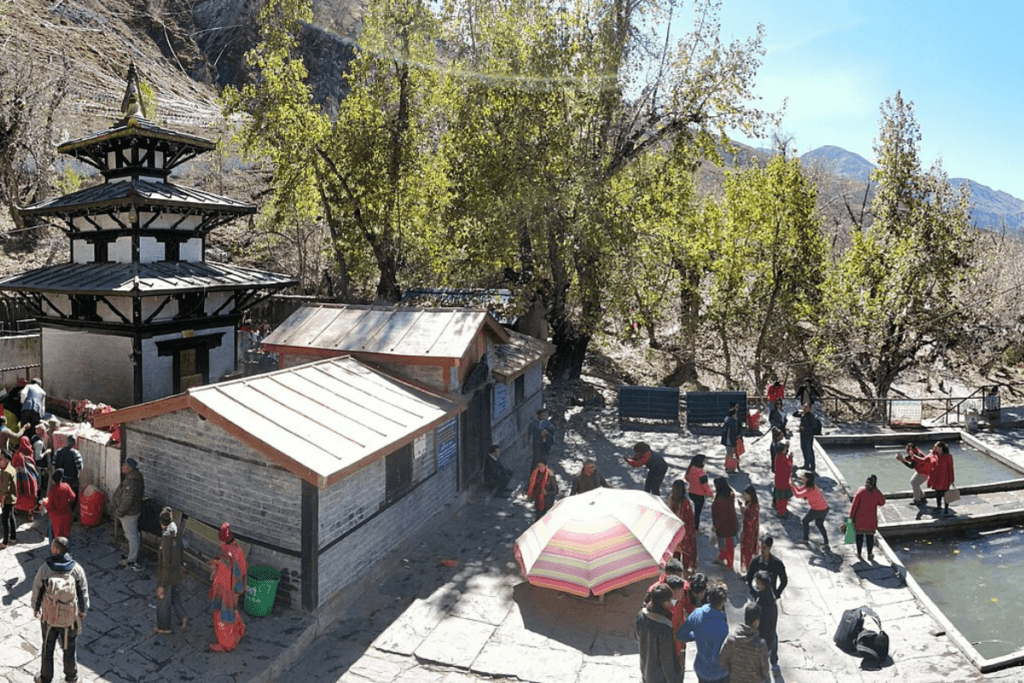
The beauty of Muktinath Temple lies in its ability to bring two major religions together in peace and devotion. For Hindus, it is a place where Lord Vishnu grants liberation from the cycle of life and death. For Buddhists, it is a sacred site blessed by Guru Rinpoche, representing compassion, purification, and enlightenment. Even though their traditions differ, the essence of both beliefs — seeking inner freedom and divine connection — beautifully meet at Muktinath.
Visitors often feel a deep sense of unity here, where Hindu and Buddhist symbols coexist side by side, and prayers from different faiths rise together into the clear Himalayan sky. In a world that sometimes highlights differences, Muktinath stands as a living example of mutual respect, shared spirituality, and peaceful coexistence. It reminds every pilgrim and traveler that while the paths may vary, the ultimate journey towards peace and liberation is universal. Whether you are visiting as a pilgrim or a seeker of inner peace, Muktinath Temple warmly welcomes all with open arms.
Conclusion
If you are searching for sacred sites in Nepal that represent the best of spiritual significance and religious harmony, Muktinath should be at the top of your list. It is a place where the soul finds solace, traditions intertwine, and visitors from different faiths come together in a shared spirit of reverence.
Embark on a journey to Muktinath Temple, and you may find that it’s not just a physical pilgrimage, but a profound inward journey toward peace and understanding.
